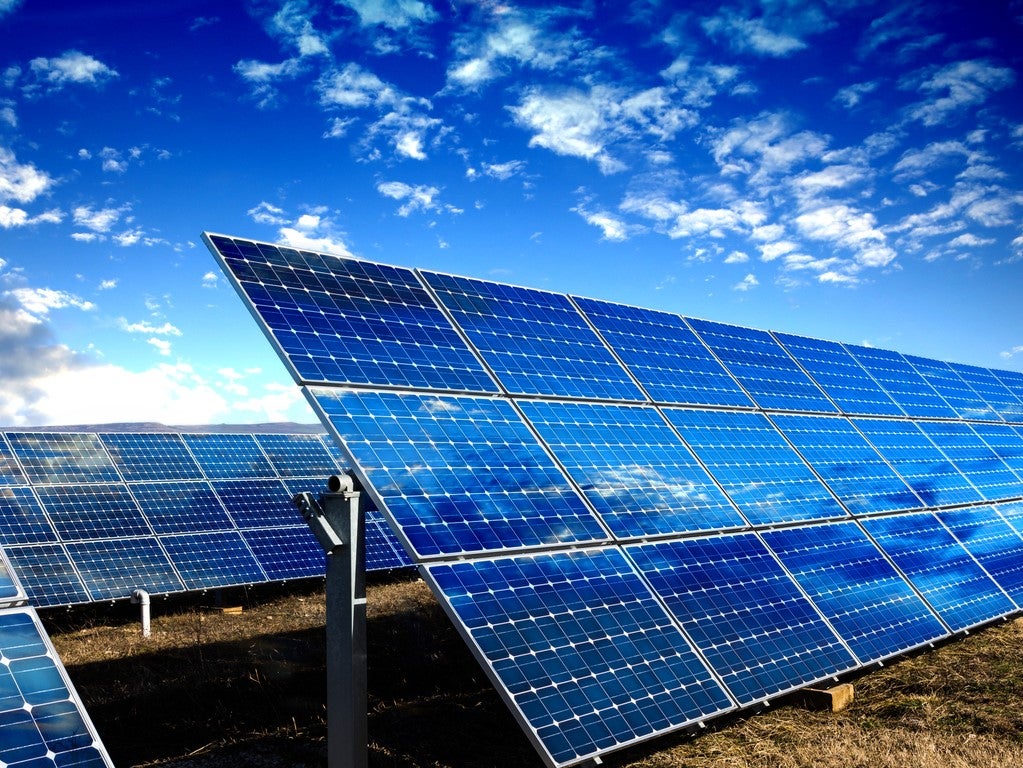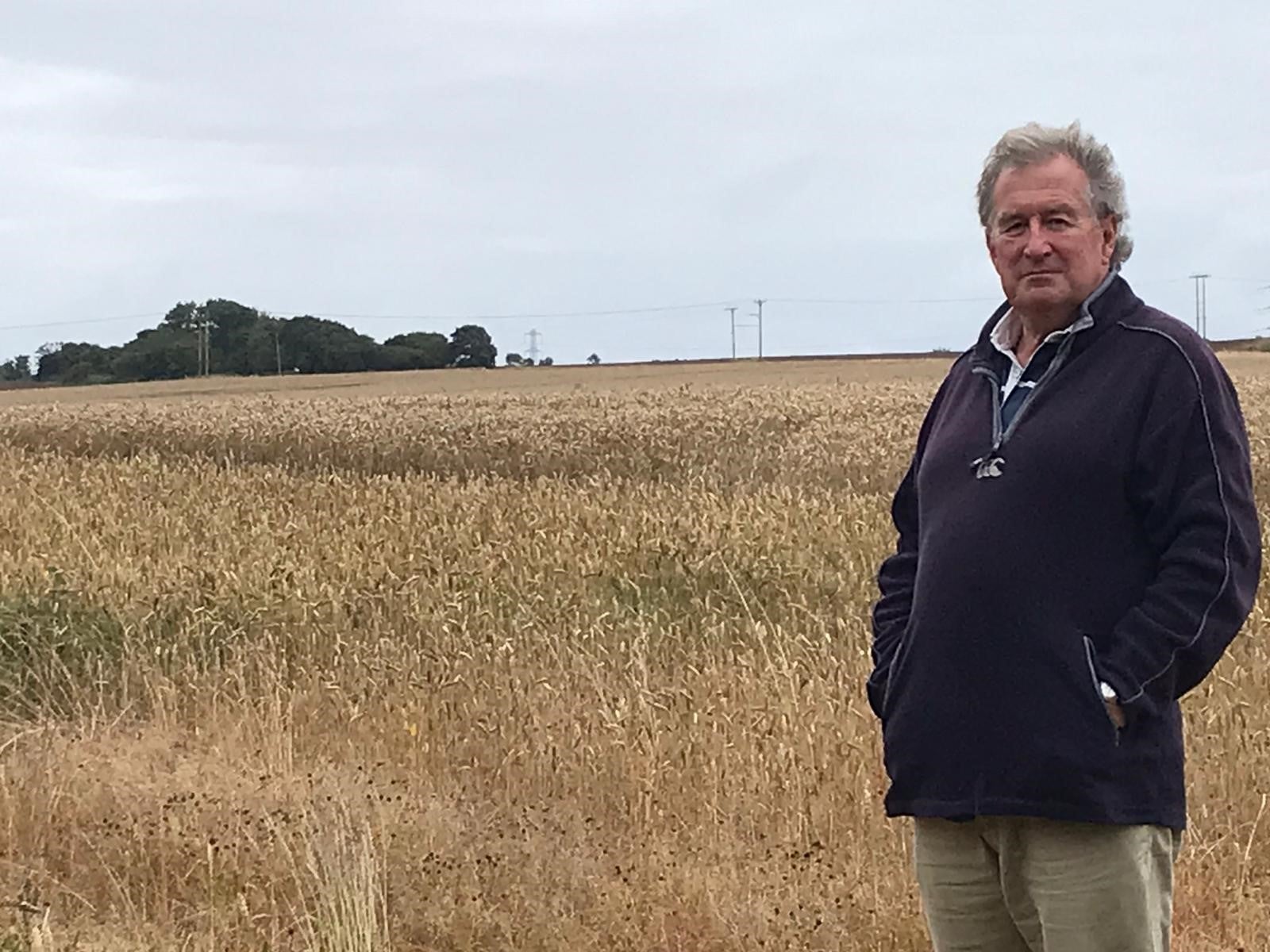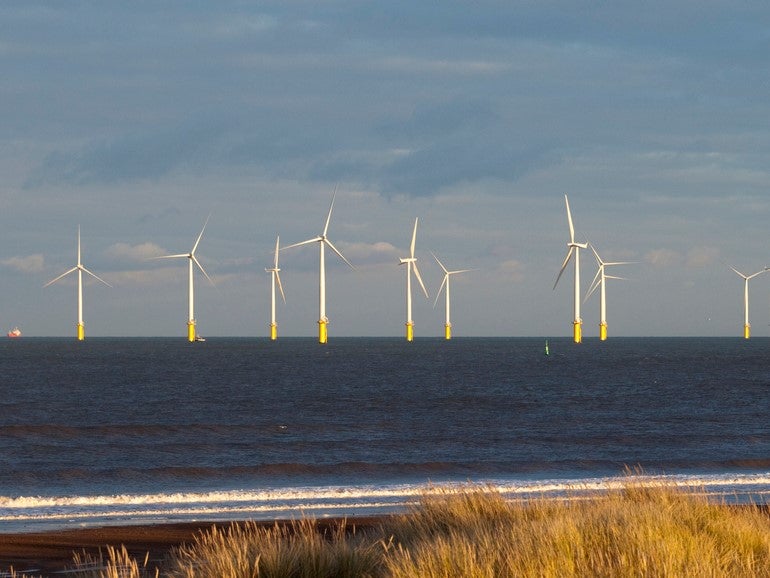Hartlepool sun city: Trio of massive solar projects set to turn northeast town into clean energy powerhouse
Three facilities will cover an area the size of 250 football pitches and power 43,000 homes – but nearby residents say they feel overwhelmed by ‘sheer magnitude’ of schemes

Your support helps us to tell the story
From reproductive rights to climate change to Big Tech, The Independent is on the ground when the story is developing. Whether it's investigating the financials of Elon Musk's pro-Trump PAC or producing our latest documentary, 'The A Word', which shines a light on the American women fighting for reproductive rights, we know how important it is to parse out the facts from the messaging.
At such a critical moment in US history, we need reporters on the ground. Your donation allows us to keep sending journalists to speak to both sides of the story.
The Independent is trusted by Americans across the entire political spectrum. And unlike many other quality news outlets, we choose not to lock Americans out of our reporting and analysis with paywalls. We believe quality journalism should be available to everyone, paid for by those who can afford it.
Your support makes all the difference.It is the northeast coastal town where locals sometimes joke that the weather is grey, drizzly and bracing – and the winters are even worse.
Now, however, Hartlepool is hoping its future can be transformed by sunshine.
Three massive solar farms are to be built within a five-mile radius of each other on the outskirts of this Teesside port – effectively turning it into the UK’s most unlikely solar powerhouse.
Individually, it is thought all three sites – dotted on farmland along the A19 – would be among the top 10 biggest such energy farms in the country if they were opened today.
But combined they will cover an area roughly the size of 250 football fields and create enough energy to power more than 43,000 local homes. They will generate peak power of almost 150MW.
Pertinently, while the developments are not the result of a specific local authority strategy, it is hoped they will bolster an oft-touted desire to position this region at the heart of a future green industrial revolution: already, the vast Teesside Wind Farm sits in the North Sea, while the UK’s first net-zero powerplant is being developed in nearby Redcar.
“The fact is if we’re to hit this target of being carbon neutral by 2050 we will need to see more of these developments,” says Shane Moore, the independent leader of Hartlepool Borough Council. “I think as long as they are situated in the right places, we need to embrace more of these. They are good for the environment but also for the local economy. This is 43,000 homes where the electricity is being created right here on our doorstep.”
The three facilities themselves are all in varying degrees of coming to fruition.
One, near the village of Hulam, was granted planning permission last year with construction work expected to begin in the coming months. Another – a proposed 200-acre project close to Sheraton – is still going through the planning process with a decision due this autumn. Both of those are being developed by the London-based energy company Lightsource BP. The third – located near Hart – was approved for going ahead just this week following an application from CS UK Holdings.
“Farming is on the decline here,” says John Littlefair who owns the land where the latter will be developed. “This is a way of generating a decent income from that land again and making it useful once more; giving it purpose.”

While the creation of solar farms in unexpected places is only set to grow in the coming years – more than 620 projects are currently proposed in the UK – there are perhaps three main factors why this little corner of the northeast has suddenly found itself as something of a centre.
The first is that it’s close to what’s called a high voltage distribution network, meaning the three facilities will be able to plug easily into the national grid without miles and miles of new pipes and cables being laid. It is for this reason, indeed, that clusters of such farms are becoming increasingly common in places like the southwest and East Anglia.
The second factor is that the relatively flat topography of the region means the panels themselves will be less visible to nearby residents – thus making the area more attractive to solar energy companies wanting a smooth ride through the planning process.
And third? Well, the region, it seems, gets more sunshine than perhaps many of us might realise.
In a 2015 research paper drawn up by academics at Sheffield Solar – a long-running research project coordinated by Sheffield University’s Energy Institute - the region was found to yield some 856kWh per kilowatt peak per year. The south coast – the UK’s top area for sunshine – yielded 978 by comparison.
“Clearly, that’s not an insignificant difference but it is still makes solar farms in the northeast highly productive,” says Jamie Taylor, senior data scientist with Sheffield Solar. “Building them there is certainly a better way of doing things than generating that same energy in, say, the southwest and then transporting it up.”
To make renewable energy most efficient within the constraints of the current national grid, he says, it is best generated close to the point of use.
“So when we see solar or wind farms being built in different areas, this can only be a good thing,” he says. “Essentially, that geographical diversity is absolutely a prerequisite if we are to transition to a more sustainable electricity supply in the coming years.”

Not everyone, however, sees the new Hartlepool cluster as a "good thing".
Several local residents have objected to the planning applications. “The impact will be devastating for a small community who feel unfairly put upon by the sheer magnitude of it all,” wrote one in a submission to Hartlepool Council. “Homeowners are asking why here? Why us?”
Elwick Parish Council, meanwhile, objected said “the industrialisation of this agricultural land” is inappropriate for the area.
Yet, back with John Littlefair who is, himself, chairman of Hart Parish Council, he remains certain this is the future.
He points out that when the day comes that solar panels are no longer wanted, they can be taken down without any lasting damage to the land. No concrete is poured in their construction; no land dug up in any great quantity. Under the raised panels, the grass remains to such an extent that it will be possible for his sheep to keep grazing there should he want.
“You’ll always get some people complain at anything,” the 67-year-old says. “But the way I see it, this is farmland and that’s what will still be happening here when these panels go up. It’s just it will be farming the skies.”
Join our commenting forum
Join thought-provoking conversations, follow other Independent readers and see their replies
Comments